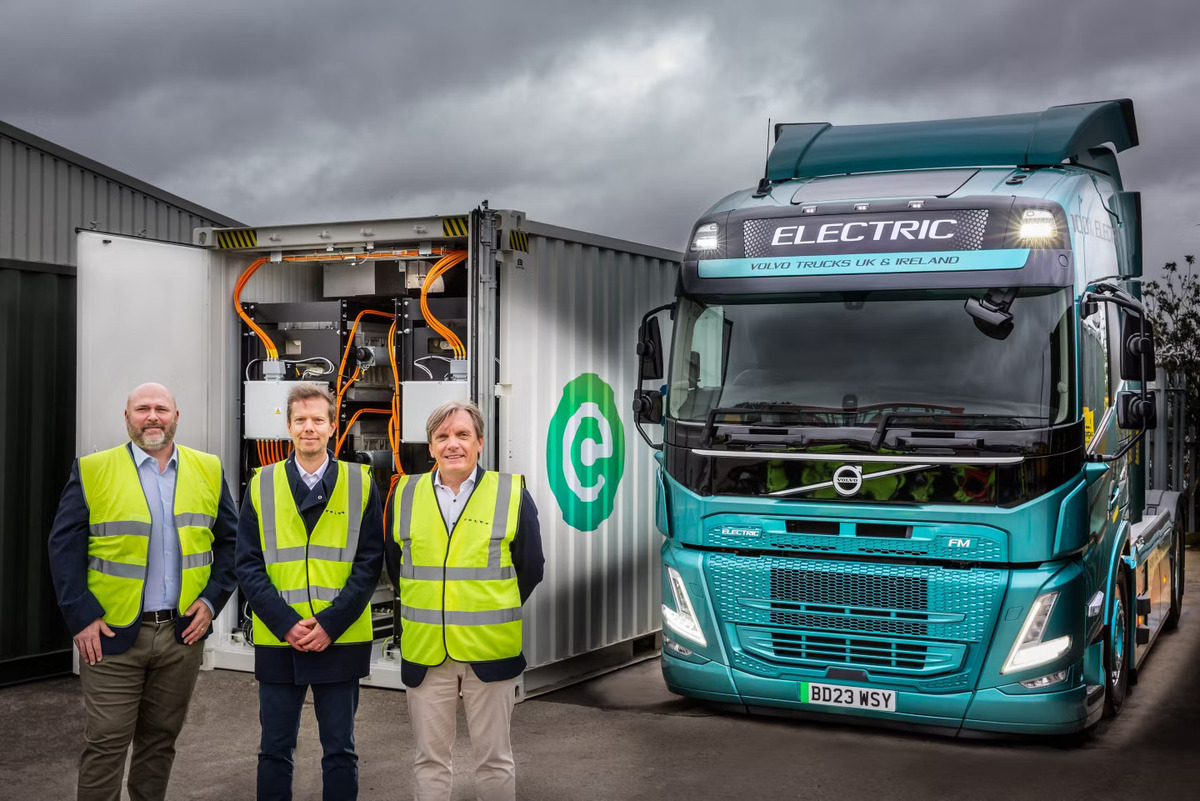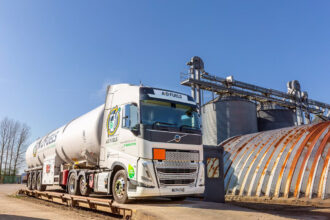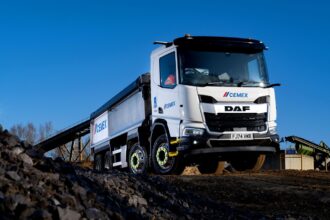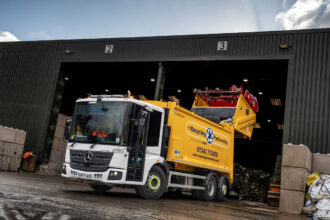Energy Storage Systems Help Volvo Truck Dealerships to Electrify
TWO VOLVO TRUCK & BUS DEALERS HAVE FOUND AN INNOVATIVE SOLUTION TO OVERCOME ONE OF THE BIGGEST BARRIERS THE UK FACES WITH THE SHIFT TO ZERO EMISSION TRANSPORT.
Image Caption: (From left to right) Patrick George, Head of Network Development, Volvo Trucks UK & Ireland; Nigel Dent, Head of Sales, Connected Energy, Christian Coolsaet, Managing Director of Volvo Trucks UK & Ireland.
Volvo Trucks UK & Ireland planned to install high-powered charge points at two of its service workshops for battery-powered HGVs and buses – Volvo Truck and Bus Centre Carlisle, and Volvo Truck and Bus Centre London North, in Enfield. However, it found that neither site had a high enough import capacity from the grid to power the chargers.
The transition to all-electric trucks requires charge points that can be up to 50 times more powerful than fast chargers for cars. This places a much bigger strain on energy supplies than car charging – with many organisations lacking the available electricity capacity to install the charging they require.
Connected Energy, a global leader in second-life battery energy storage systems, worked with each site to install their innovative 300kW E-STOR system. The systems will provide enough power to ensure both facilities can run high-capacity charging points – 350kW and five 22kW electric car chargers for courtesy cars and vans for Enfield, while at Carlisle E-STOR will support a 150kW truck charge point and two 22kW electric car chargers for courtesy cars and vans.
Christian Coolsaet, Managing Director at Volvo Trucks UK & Ireland, said: “As a market leader in electric trucks, it is important that we can provide high-powered charging at our key locations within our dealer network to support our customers. However, we are faced with grid capacity constraints at almost all our sites which is impacting our infrastructure plans. By installing Connected Energy’s battery energy storage systems, we can bring additional power onto the sites which helps us to move forward with the installation of high-powered charge points.”
“The systems also support our wider net zero strategy to decarbonise our own workshop operations which includes investments in air source heat pumps, PV solar panels, energy efficient smart lighting systems and transitioning our service and parts van and courtesy car fleets to electric. London North will become one of our flagship carbon-neutral sites, generating its own power from a solar array with excess generation stored within the battery energy storage systems.”
E-STOR acts like an energy reservoir, storing power from the grid or on-site renewables during periods of low demand, and then releasing it during peak periods. In this way, it can help electric truck depots and service centres to offer high-capacity EV charging without worrying about grid connection constraints.
More than just batteries in a box, E-STOR has a sophisticated intelligent management system which means it can be programmed to respond to the energy demands on site. It can integrate with on-site solar arrays and is doing so at the Enfield site.
Because E-STOR uses second-life batteries from former EVs, it offers significant carbon savings compared to an energy storage system that uses new batteries. This aligns with Volvo’s drive to adopt circular economy business principles, particularly relating to the reuse of batteries.
Matthew Lumsden, CEO of Connected Energy, said: “Truck depots and service centres were not designed with EV charging in mind, so many of them are facing capacity issues as they look to extend their range into larger vehicles. E-STOR is often a more affordable alternative to expensive grid infrastructure upgrades – or in some cases the only option. We have seen an increase in enquiries as bus and truck operators begin to understand the lack of capacity on their sites and start to look for solutions to grid constraints.”





